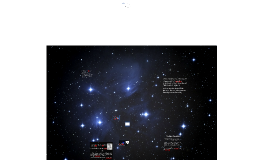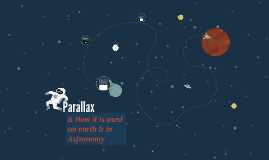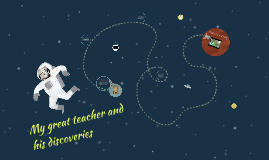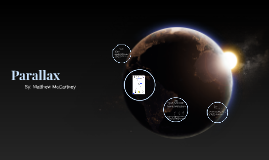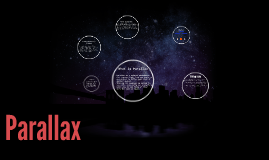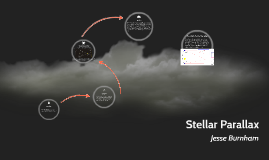Parallax
Transcript: Back Round 28 32.5 37.5 43.5 48 Data Distance Apart (ft) Conclusion Parallax par·al·lax ˈparəˌlaks/Submit noun noun: parallax the effect whereby the position or direction of an object appears to differ when viewed from different positions, e.g., through the viewfinder and the lens of a camera. the angular amount of parallax in a particular case, especially that of a star viewed from different points in the earth's orbit. plural noun: parallaxes By: Matthew McCartney The data revealed that as the distance between the two points was increased, the difference between those two points increased. The evidence that supports this is that when the two points were one foot apart they had a difference of 16.5 inches which increased to 25.5 inches (2 feet apart), then to 34.5 inches (3 feet apart), followed by 43 inches (4 feet apart) and finally 50 inches (5 feet apart).Therefore, the hypothesis must be accepted because as the distance between two points increased, so did the difference between the parallax. I learned that even though an object, like a star, might seem to move it doesn’t really move, as your perspective on the object is changing(Like where you are on the planet (Summer, Winter).If I did this experiment again I would change the distance between the two points to the distance between the object and the points, so it would show the relationship between looking at a star from mars and looking at a star from Earth(as an example). This experiment relates to real life because this whole experiment is a miniature version of how ancient astronomers found the distance between stars. it shows how they used the technology they had back then to find a simple way to find something impossible(at that time). 11.5 7 3 0.5 -2 Parallax's were the way ancient astronomers could find the distance between stars, planets and other celestial objects. This is quite a feat, considering the technology they had back then. This might seem impossible, but it is a pretty easy way to find this data out. My experiment that I did was a miniature version of this, but gave the same results. http://nces.ed.gov/NCESKIDS/createagraph/default.aspx?ID=43fddb9771bd41f083cf2b6b90c6697a Parallax Left Point Materials: -a yardstick or meter stick -a thick rubber band -2 hula hoops or 2 rocks -measuring tape -Stick -a wide open space, like a backyard or park Right Point Difference Procedure: Find an object that is tall and skinny, like a tree or a light pole. Get your measuring tape, the rocks( to serve as your viewing points from Earth), the yard stick and stick. Set up your stick and yardstick into an L-shape and attach the rubber band to it (to hold it steady). This will be your apparatus. Get your apparatus and set it up in front of the object you picked out. Put two rocks down on either side of your apparatus, with 1 foot between them. Measure where the object measures on the yardstick from both points and record your data. Do this four more times, but put add a foot in between the two points (rocks) each time. Record all your data and your done. 1 2 3 4 5 Hypothesis: If you look at an object from different positions on a yard stick, it will change between the left and right side because you’re looking at the object from a different view. http://nces.ed.gov/NCESKIDS/createagraph/default.aspx?ID=338c7512e92b4c6a85bf09896f05b95d 16.5 25.5 34.5 43 50 Testable Question: Does the view of an object change if you look at it from different positions as the distance between them increased?






